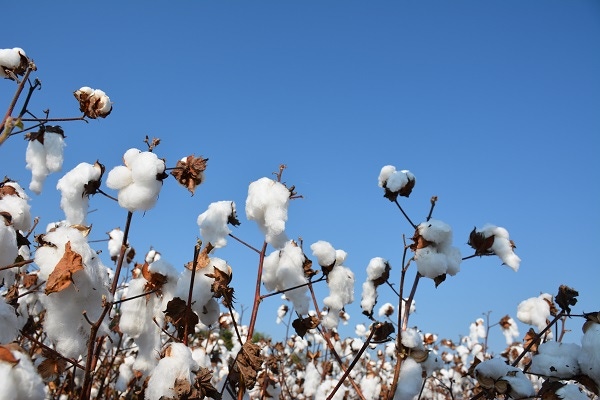
Oklahoma’s cotton crop will need fair fall weather to catch up on heat units and overcome early season delays created by much-needed rainfall that pushed most growers into June to plant.
“We had a significant amount of timely rainfall that put the crop a couple of weeks late,” says Randy Boman, Oklahoma State University Extension cotton leader and resident director of the Southwest Research Center at Altus.
“Farmers were rained out of their fields for most of the month of May. Conditions turned dry in June, however. A few areas in the Southwest part of the state have received beneficial rainfall,” Boman said. “Other areas, especially dryland fields, need rain.
“The crop is moving right along,” he said during a break at the recent Oklahoma Irrigation Conference in Fort Cobb.
Insect pressure has been light with no significant thrips infestations. “We saw a few fleahoppers but most farmers took care of that.”
Challenges remain as the crop heads toward maturity.
“We have something of a balancing act with this crop,” Boman said. “Irrigated cotton is late and probably does not have the yield potential we want. Hopefully, dryland production will make up for some of that.”
For the latest on southwest agriculture, please check out Southwest Farm Press Daily and receive the latest news right to your inbox.
Planting estimates, including numbers from the Oklahoma Boll Weevil Eradication Program, indicate a crop of about 200,000 acres. “That’s down a little from last year,” Boman said.
Making a profit on this crop, even with better soil moisture compared to the last four years, will be difficult. “The overall situation with the price and weed control difficulties creates a real challenge to make a profit.”
The weed issue is exacerbated by increased soil moisture. “Fortunately, a lot of folks followed Extension recommendations and used residual herbicides,” Boman said. “Even some of them had issues with weed control but we have to wonder what those fields would have looked like if they had not used a residual herbicide program. Residual herbicides did work.”
New technology coming
He said new technology expected to be available next year should help farmers deal with hard-to-control and resistant weeds. Monsanto’s XtendFlex and Dow’s Enlist Duo should have full labels for the 2016 growing season and will offer producers more options for timely weed control.
Boman says the 2015 crop will need to pick up another 900 or so heat units to mature. “No doubt this is a late crop. We accumulated 1,650 heat units from early June into early August. Now, we need a good fall,” he said. “We need to squeeze out as many heat units as we can.” Typically, the area around Altus, Okla., picks up 900 heat units late in the season. If that average holds, Boman believes the crop will do well.
Boman said farmers also are concerned about predictions for a “Godzilla El Niño off the South American coast.” If predictions hold, the El Niño could bring record rainfall into the Southwest this fall and winter.
“We’ll just have to take that as it comes,” Boman said. “We are hoping for the best.”
About the Author(s)
You May Also Like






